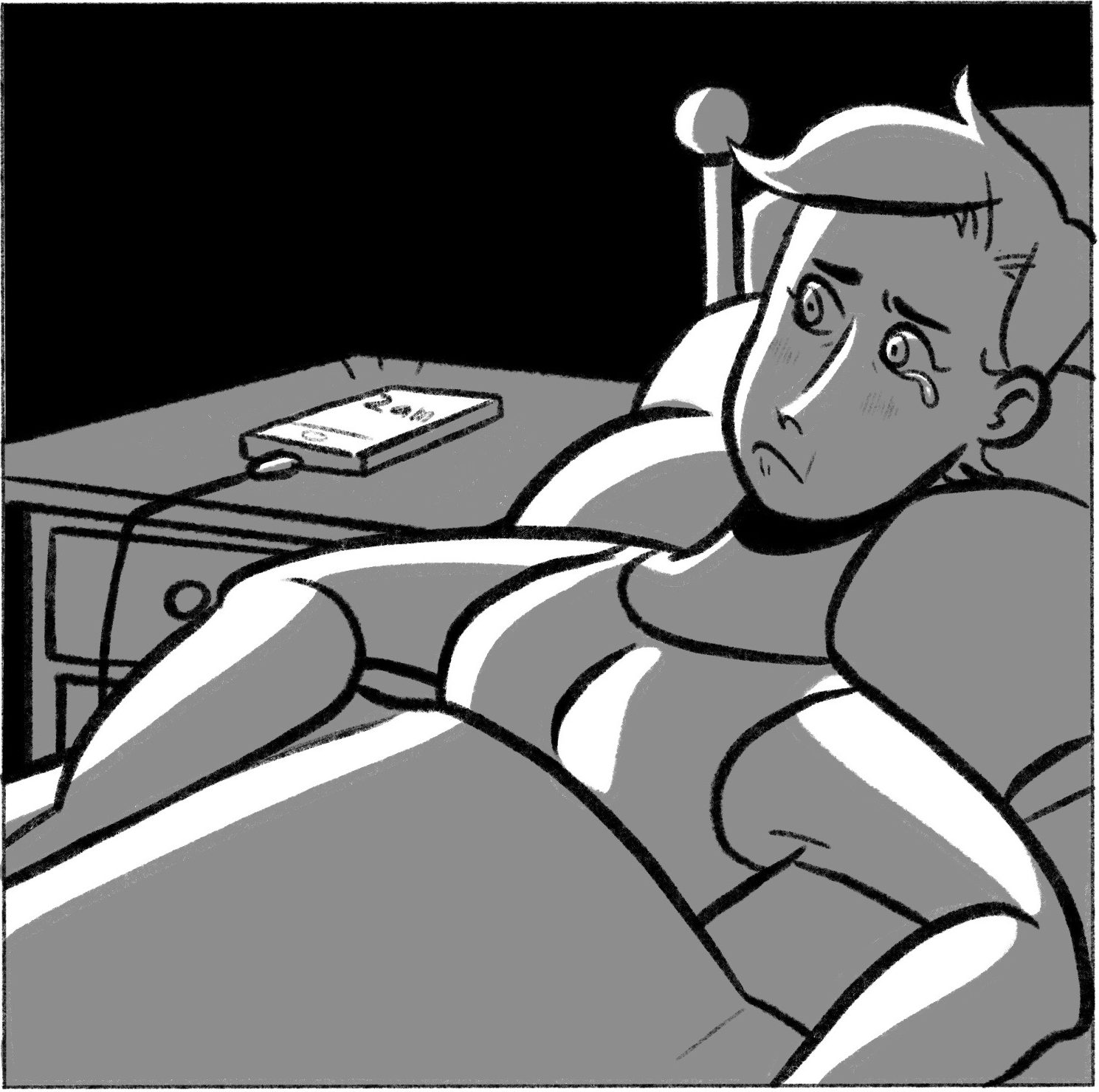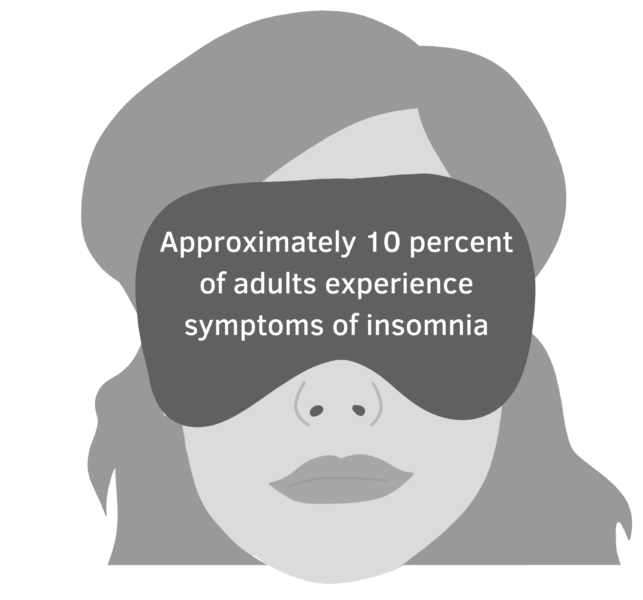

It’s 3 a.m. Some nights, Biology teacher Katherine Ward’s house is dark and quiet. On others, however, the whir of an exercise machine and the smell of baked cookies fill the house.
Ward is one of many Americans who grapple with insomnia. The total is close to 60 million, according to National Public Radio.
Unlike the occasional sleepless nights familiar to many, insomnia is a long-term sleep disorder that compromises mental and physical health. Symptoms of insomnia are far-reaching, from non-restorative sleep and fatigue to increased mood disturbances and declining performance in work and school. Insomnia is especially prevalent among high schoolers today. According to the National Institutes of Health, an estimated 23.8 percent of adolescents are suffering from insomnia.
“Insomnia is when you have problems falling asleep [and/or] staying asleep [for an extended period of time] … in spite of the fact that you get enough time to … sleep,” said psychiatrist Dr. Richard Barth.
Insomnia impacts people during the day just as much as it impacts people at night. According to the New York Times, chronic insomnia is correlated with a greater risk for mental disorders including anxiety and depression. In a National Sleep Foundation poll, 73 percent of teenagers who reported feeling “unhappy, sad, or depressed” also experienced sleep problems.
“[Insomnia] … makes very low stakes situations sometimes seem high stakes because panic is a lot easier to come by when you’re tired,” said junior Claire Freeman.
Barth links this stress with a lack of sleep.
“Some of the stress and impairment people feel is [based on what] they’re telling themselves about how much sleep they got,” Barth said. “You’ve got a double whammy here: You didn’t get enough sleep, and you’re telling yourself these [negatives].”
Mental health affects insomnia just as much as insomnia affects mental health. For alumnus Danny Williams, the stress associated with schoolwork escalates his insomnia.
“As sleep deprivation has become normalized … people often fail to understand the gravity of insomnia”
“Being in a more academically focused environment [like] Aragon [made] it very hard [to sleep],” Williams said. “In college, there’s a lot less pressure because I just focus on what I like to do.”
Stress that impedes sleep doesn’t just stem from academic pressures. For some, worries in their personal lives can reflect in sleep schedules.
“Having a mind that’s constantly going makes sleep difficult,” Ward said. “My mom was very ill for a very long time and I was her primary caregiver … I was going to bed thinking about ‘What do I do next? What does she need? What’s wrong?’ and … not being able to get that out of my head.”
“We don’t have … time to take the extra time to catch up so we … have to run on empty”
As we normalize sleep deprivation more in high school settings, people often fail to understand the gravity of insomnia. According to the National Sleep Foundation, more than 87 percent of American high schoolers suffer from chronic sleep deprivation. The adolescent sleep cycle, or “body clock,” is directly at odds with the way school schedules are designed. Teenagers are biologically programmed to stay up and wake up later, despite the school system currently demanding the opposite. These problems are only exacerbated in people with chronic insomnia.
“[A lot of people think that] people with insomnia aren’t constantly struggling to keep up with everybody else,” said senior Sydney Rose. “We don’t have … time to take the extra time to catch up so we … have to run on empty.”
This lack of understanding produces misconceptions about what insomnia is.
“Insomnia is not just being a night owl, it’s no sleep to the point of it [affecting your well-being],” Freeman said.
For Carmen*, who deals with insomnia, these misconceptions can be demoralizing.
“People [like me] that have those problems, it’s draining [our] lives and it’s hurting [us],” Carmen said.
Each individual suffering from insomnia finds unique ways to cope with it, from prescription medication that stimulate sleep hormones to cognitive behavioral therapy and lifestyle changes.
“The adolescent sleep cycle … is directly at odds with the way school schedules are designed”
However, what works for some may not work for others.
“[Over-the-counter medication like] Nyquil [doesn’t] work on me and caffeine also doesn’t really have that much of an effect … unless I take 6 really high doses,” Williams said. “[I’ve] just [had to] learn to live with it.”
For others, medication can be a saving grace for sleepless nights.
“I would always drink green tea [frappuccinos] to just survive for a day,” Carmen said. “I’m now taking [medication] … so I’m sleeping more regularly, but I still have some days where … [they] don’t work.”
Another common treatment for insomnia is therapy.
“Cognitive behavioral therapy … changes … behaviors and thought patterns that perpetuate insomnia,” Barth said.
Psychiatrists like Barth help patients through methods like sleep restriction, in which the amount of time spent in bed is limited in order to maximize sleep time in bed and minimize time spent awake in bed. For example, if one lies in bed for eight hours but spends two of those tossing and turning, time in bed is limited to a total of six hours instead. By only spending time in bed sleeping, beds are associated with rest, and not the frustration and stress that comes with insomnia.
“Have a really frank conversation [with your physician],” Ward said. “You know your situation better than the doctor does. You’re in the driver’s seat in terms of … help[ing] them understand how much it’s affecting your life.”
Regardless of the treatment one chooses, help is available. Anyone who believes they may have insomnia, or currently struggle with insomnia, are encouraged to reach out for help.
*Students’ names have been changed to protect their privacy.





